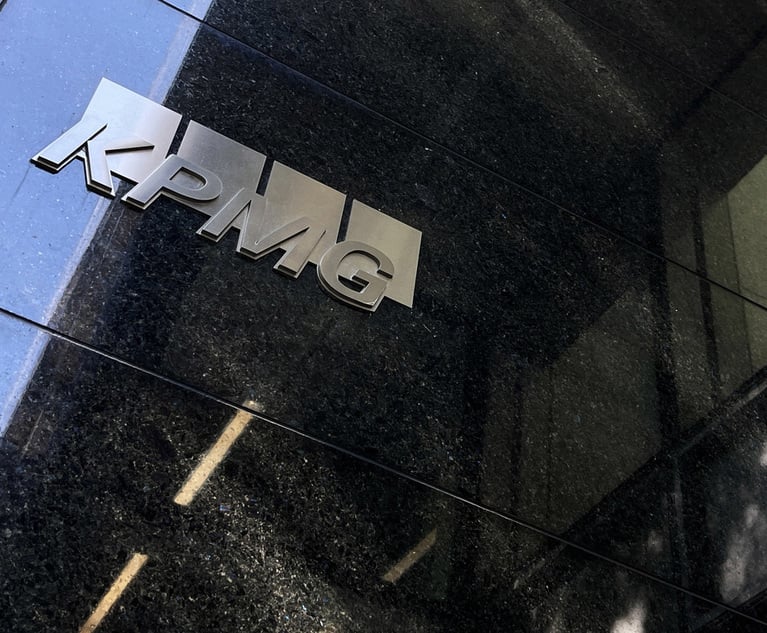Deciphering the USPTO's Material Alteration Standard for Amending Marks
As brands mature over time, their owners often seek to update marks that are subject to a federal registration or registration application. In some cases, the impetus for the amendment may be deliberately to freshen, tweak, or otherwise modernize the subject mark. In other cases, brand owners may recognize after the fact that their current usage of a mark does not match the mark as originally registered or applied for.
October 13, 2020 at 02:09 PM
16 minute read
As brands mature over time, their owners often seek to update marks that are subject to a federal registration or registration application. In some cases, the impetus for the amendment may be deliberately to freshen, tweak, or otherwise modernize the subject mark. In other cases, brand owners may recognize after the fact that their current usage of a mark does not match the mark as originally registered or applied for.
The decision regarding whether to seek to amend the form of a mark goes well beyond just aesthetics, as there are two important legal considerations, particularly as to existing registrations. They are whether the amended mark will be deemed as abandoning the original form of the mark and whether the changes made will prevent the brand owner from tracing priority back to the original mark's date of first use and, in the case of a federally registered mark, its nationwide priority date. The latter consideration is also known as "tacking" and in contentious matters a decision on whether tacking is available will often control priority of rights between the brand owner and a challenger. See, Hana Fin., Inc. v. Hana Bank, 574 U.S. 418 (2015). When properly executed, some brand owners have many times successfully amended the same registration over the years with priority in the originally registered mark dating back a century or more.
Although clearly desirable, amendments to marks subject to federal registrations or registration applications are not automatically accepted by the United States Patent and Trademark Office. 15 U.S.C. §1057(e) provides "upon application of the owner …, the Director for good cause may permit any registration to be amended … Provided, That the amendment … does not alter materially the character of the mark." Trademark Rule 2.72 and the Trademark Manual of Examining Procedure (TMEP) have expanded on what constitutes a material alteration. See, 37 C.F.R. §2.72; TMEP §§807.14-807.14(f), 1205.8, 1609.02-1609.02(a) (October 2018). These sections, as well as case law construing them, provide the following general guidelines to brand owners seeking to amend their federal registrations or applications:
- The material alteration standard is applied equally for evaluating amendments to marks both during the original prosecution of an application and after a registration has issued.
- An amendment to an application will be deemed to be material alteration if the change would require republication "in order to present the mark fairly for purposes of opposition." TMEP 1602(a).
- An amendment to a mark will not be deemed to be a material alteration if "the modified mark contains the essence of the original mark" and "the mark as amended creates essentially the same impression as the original mark".
- The Office takes a flexible, not a rigid, approach to application of the material alteration standard. Each case is to be considered in light of the specific circumstances.
- Whether a proposed amendment materially alters the mark is determined by comparing the proposed amendment with the description or drawing of the mark as filed with the original application.
37 C.F.R. §2.72; TMEP §§807.14, 1609.02(a); see also, In re Who? Vision Sys., Inc., 57 U.S.P.Q.2d 1211, 1217-18 (T.T.A.B. 2000); In re Finlay Fine Jewelry Corp., 41 U.S.P.Q.2d 1152, 1154 (T.T.A.B. 1996).
This content has been archived. It is available through our partners, LexisNexis® and Bloomberg Law.
To view this content, please continue to their sites.
Not a Lexis Subscriber?
Subscribe Now
Not a Bloomberg Law Subscriber?
Subscribe Now
NOT FOR REPRINT
© 2025 ALM Global, LLC, All Rights Reserved. Request academic re-use from www.copyright.com. All other uses, submit a request to [email protected]. For more information visit Asset & Logo Licensing.
You Might Like
View All
Does Your Corporate Compliance Program Reasonably Prevent Fraud? New UK Guidance Demands It
11 minute read

KPMG Wants to Provide Legal Services in the US. Now All Eyes Are on Their Big Four Peers

Law Firms Mentioned
Trending Stories
Who Got The Work
J. Brugh Lower of Gibbons has entered an appearance for industrial equipment supplier Devco Corporation in a pending trademark infringement lawsuit. The suit, accusing the defendant of selling knock-off Graco products, was filed Dec. 18 in New Jersey District Court by Rivkin Radler on behalf of Graco Inc. and Graco Minnesota. The case, assigned to U.S. District Judge Zahid N. Quraishi, is 3:24-cv-11294, Graco Inc. et al v. Devco Corporation.
Who Got The Work
Rebecca Maller-Stein and Kent A. Yalowitz of Arnold & Porter Kaye Scholer have entered their appearances for Hanaco Venture Capital and its executives, Lior Prosor and David Frankel, in a pending securities lawsuit. The action, filed on Dec. 24 in New York Southern District Court by Zell, Aron & Co. on behalf of Goldeneye Advisors, accuses the defendants of negligently and fraudulently managing the plaintiff's $1 million investment. The case, assigned to U.S. District Judge Vernon S. Broderick, is 1:24-cv-09918, Goldeneye Advisors, LLC v. Hanaco Venture Capital, Ltd. et al.
Who Got The Work
Attorneys from A&O Shearman has stepped in as defense counsel for Toronto-Dominion Bank and other defendants in a pending securities class action. The suit, filed Dec. 11 in New York Southern District Court by Bleichmar Fonti & Auld, accuses the defendants of concealing the bank's 'pervasive' deficiencies in regards to its compliance with the Bank Secrecy Act and the quality of its anti-money laundering controls. The case, assigned to U.S. District Judge Arun Subramanian, is 1:24-cv-09445, Gonzalez v. The Toronto-Dominion Bank et al.
Who Got The Work
Crown Castle International, a Pennsylvania company providing shared communications infrastructure, has turned to Luke D. Wolf of Gordon Rees Scully Mansukhani to fend off a pending breach-of-contract lawsuit. The court action, filed Nov. 25 in Michigan Eastern District Court by Hooper Hathaway PC on behalf of The Town Residences LLC, accuses Crown Castle of failing to transfer approximately $30,000 in utility payments from T-Mobile in breach of a roof-top lease and assignment agreement. The case, assigned to U.S. District Judge Susan K. Declercq, is 2:24-cv-13131, The Town Residences LLC v. T-Mobile US, Inc. et al.
Who Got The Work
Wilfred P. Coronato and Daniel M. Schwartz of McCarter & English have stepped in as defense counsel to Electrolux Home Products Inc. in a pending product liability lawsuit. The court action, filed Nov. 26 in New York Eastern District Court by Poulos Lopiccolo PC and Nagel Rice LLP on behalf of David Stern, alleges that the defendant's refrigerators’ drawers and shelving repeatedly break and fall apart within months after purchase. The case, assigned to U.S. District Judge Joan M. Azrack, is 2:24-cv-08204, Stern v. Electrolux Home Products, Inc.
Featured Firms
Law Offices of Gary Martin Hays & Associates, P.C.
(470) 294-1674
Law Offices of Mark E. Salomone
(857) 444-6468
Smith & Hassler
(713) 739-1250








